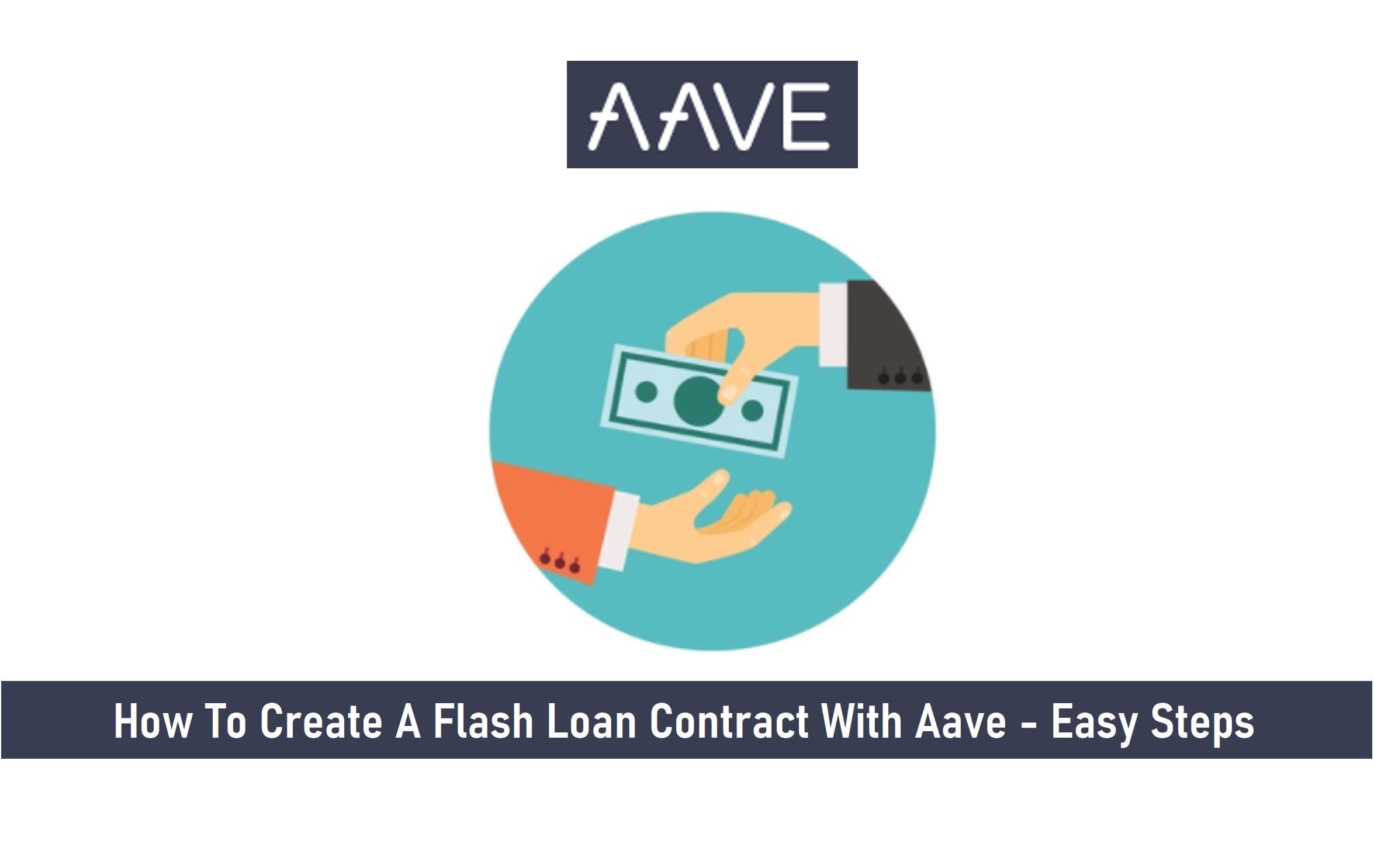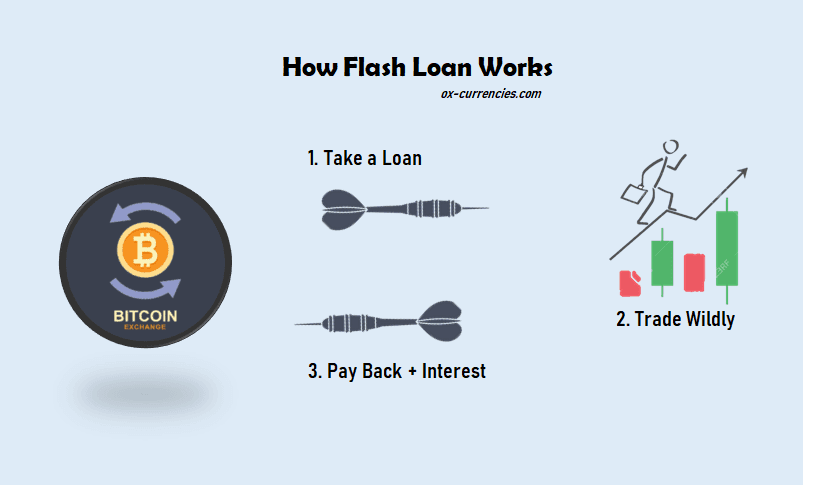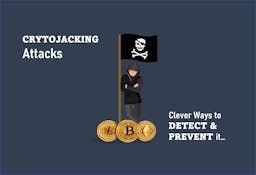
What is a Flash Loan Contract?
As the name implies, Flash loans are instant and requires a borrower to carry out smart contracts to perform swift trades against the loan lent. Flash loans are driven by smart contract rules which the lender and borrower must follow.
For example, if a borrower defaults, the smart contract reverses the transaction as if it never happened. Powered by the blockchain, flash loans are quick and instant and collateral free.
Key Takeaways
• Flash loans are quick and instant and the borrower has to perform the trade before the transaction ends. This usually happens in a flash (seconds)
• Flash loans are unsecured, free of collateral which makes it a smart option for investors to grow their account with price differences of 1-3%.
• Flash loans can be used by traders to swap low quality collateral serving as a cover for the loan in question with some high quality collateral.
Running on the Ethereum blockchain, Aave is a decentralized non-custodial money market that is designed to connect borrowers and lenders from all over the world.
Lenders that contribute to the liquidity pool on Aave can earn passive income in form of interest on the contributed asset they make available to borrowers.

To borrow on Aave, one has to utilize the idea of an over-collateralized loan where you have to provide collateral higher in value than the amount of asset you intend to borrow, that was until Aave introduced flash loans.
Now borrowers can take out loans without collateral from the unused liquidity within pools on Aave provided the loan is returned with the same block with an interest fee of 0.09% of the value of the asset borrowed.
SEE ALSO: Flash Loan Attacks And How To Prevent It
Setting Up A Flash Loan
The idea of having a loan without collateral is welcoming but at the same time is limited in use.
The most common and seemingly only use of flash loans is for arbitrage of assets on different markets.
Arbitrage in simple terms the act of utilizing the momentary difference in the price of a particular asset on different markets to make a quick profit. An investor buys from one with a lower comparative price and sells on another with a higher comparative price.
Some key features worth noting about flash loans are that they are composed of mini operations and most importantly are sensitive just like every other transaction that happens on the Ethereum network.
Flash loans comprise a series of operations or processes which are fixed and cannot be reduced, increased, or divided into smaller processes.
All the operations have to be carried out for the flash loan to be possible else there was never a transaction, to begin with. This also includes the process of paying back the loan plus interest and 0.09% of the amount loaned as a fee.
SEE ALSO: 7 Best Platforms for Bitcoin Loans with Low-Interest Rates
Flash loans, as the name implies, are not just quick but have to be paid back in the same transaction that was started to borrow the loan in the first place.
So it is either all, or nothing ever happened and no loan was ever given out. That is like under seconds from start to finish, so how do you go about borrowing, trading, and paying back so fast? The key is smart contracts through coding.
Smart contracts are coded program data on the Ethereum blockchain that are programmed to run automatically when certain conditions specified by the programmer have been met.
Smart contracts are written in Solidity, an object-oriented programming language, on the Ethereum network and stored as a .sol file extension.
To set up a flash loan, you need the following:
1. Programming language
2. IDE
3. Medium to connect to the Ethereum network
How to Step Up a Flash Loan
STEP 1: Set up an IDE
An IDE, short for Integrated Development Environment, is a tool or application that provides the necessary facilities and libraries for writing, debugging, and previewing a functional code in a programming language. For solidity programming languages, a popular IDE is the Remix IDE.
Remix is an open-source browser-based IDE with the primary purpose of writing smart contracts on the Ethereum network. It can be downloaded offline, but for Flash loans which requires manipulating Ethereum smart contracts online, you should focus on the online aspect.
Open the Remix IDE on your preferred web browser
SEE ALSO: How Can I Obtain a Cryptocurrency Insurance?
STEP 2: Set up a connection to the Ethereum network
MetaMask is a wallet with a browser function that allows you to seamlessly connect with the Ethereum blockchain network securely and easily execute transactions.
Buying and selling of Ethereum and Ethereum based tokens can easily be done since MetaMask can link directly with decentralized platforms such as Coinbase.
Go to MetaMask.io and download the MetaMask browser extension or search for it on the extensions page of your browser and install.
MetaMask is supported on major browsers such as Firefox, Chrome, and Opera, so it should be easy to find and download the browser extension if you are using them. Since MetaMask is more like a wallet with a browser functionality, you have to set it up by creating a secured password and storing your mnemonic seed phrase securely.
STEP 3: Create the smart contract
This is where coding skills and knowledge are highly required. But a quick overview, you should end up with the following files in your Remix IDE, together which forms the flash loan.
- FlashLoan.sol
- FlashLoanReceiverBase.sol
- ILendingPoolAddressesProvider.sol
- IFlashLoanReceiver.sol
- ILendingPool.sol
- Withdrawable.sol
Aave provides building blocks or dependencies that can be imported to your code. One is the FlashLoanReceiverBaseV1 abstract contract which houses borrowing and repayment implementation details of the flash loan.
You should supply the address of the desired lending pool supported by Aave to use this. This abstract contract comprises the flash loan function and the execute-operation.
The flashLoan function contains the address where the loan will be received, the address of where the asset is, the amount of the asset to be loaned, and the data value that accompanies the process.
The execute-operation function contains the address where the loan will be paid, the amount of the asset that was borrowed, the fee to be paid back with the loan, and some values required by the function to work properly.
SEE ALSO: How to Confirm An Unconfirmed Bitcoin Transaction
STEP 4: Deploy The Smart Contract
To deploy the smart contract, you have to set your solidity compiler to 0.6.6 before proceeding to compile the FlashLoan.sol file.
STEP 5: Link To Connection And Execute
Open MetaMask and set your network to the network you want to deploy to.
Set the environment field from JavaScript VM to Injected Web3 in the deploy and run transaction tab. Now grant permission on MetaMask when it opens.
Click confirm and MetaMask is linked.
Go back to the Remix IDE and execute the Flash Loan. Confirm the MetaMask popup.
Can You Set Up Flash Loans Without Coding?
Flash loans require deep technical knowledge to pull off and are thus mostly utilized by developers.
Tools like Defisaver and Collateralswap act as game changers as they can be used to set up flash loans with ease. Furucombo provides interfaces for users to use and set up a flash loan without any knowledge of coding.
SEE ALSO: 6 Best Blockchain Certification Training Right Now
Final Thoughts
If all the required processes for a flash loan are properly coded and followed, you will be able to borrow from the desired pool, use and then pay back plus the fee all in a single transaction block without any collateral whatsoever.
Read More




